Kurdistan
Kurdistan ([ˌkʊɾdɪˈstɑːn] (![]()
_box_inset_removed.jpg) Kurdish-inhabited areas (according to CIA, 1992)[1][2] | |
| Language | Kurdish & Zaza-Gorani languages |
|---|---|
| Location | Upper Mesopotamia[3] and the Zagros Mountains[4] |
| Parts | Northern Kurdistan (Turkey) Southern Kurdistan (Iraq) Eastern Kurdistan (Iran) Western Kurdistan (Syria) |
| Largest cities | Diyarbakır (Amed) Erbil (Hawler) Kermanshah (Kirmashan) Al-Hasakah (Heseke) |
Contemporary use of the term refers to the following areas: southeastern Turkey (Northern Kurdistan), northern Syria (Rojava or Western Kurdistan), northern Iraq (Southern Kurdistan), and northwestern Iran (Eastern Kurdistan).[10][11] Some Kurdish nationalist organizations seek to create an independent nation state consisting of some or all of these areas with a Kurdish majority, while others campaign for greater autonomy within the existing national boundaries.[12]
Iraqi Kurdistan first gained autonomous status in a 1970 agreement with the Iraqi government, and its status was re-confirmed as the autonomous Kurdistan Regional Government within the federal Iraqi republic in 2005.[13] There is a Kurdistan Province in Iran, but it is not self-ruled. Kurds fighting in the Syrian Civil War were able to take control of large sections of northern Syria as government forces, loyal to President Bashar al-Assad, withdrew to fight elsewhere. Having established self-governing regions in an Autonomous Administration of North and East Syria, they call for autonomy in a federal Syria after the war.[14]
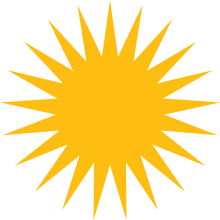 |
|
|
Modern history
|
History
Etymology
The exact origins of the name Kurd are unclear. The suffix -stan (Persian: ـستان, translit. stân) is Persian for land. Literal translation "Land of Kurds". The word "Kurdistan" is first attested in 11th century Seljuk chronicles.[9]
"Kurdistan" was also formerly spelled Curdistan.[15][16] One of the ancient names of Kurdistan is Corduene.[17][18]
Ancient history
Various groups, among them the Guti, Hurrians, Mannai (Mannaeans), and Armenians, lived in this region in antiquity.[19] The original Mannaean homeland was situated east and south of the Lake Urmia, roughly centered around modern-day Mahabad.[20] The region came under Persian rule during the reign of Cyrus the Great and Darius I.
The Kingdom of Corduene, which emerged from the declining Seleucid Empire, was located to the south and south-east of Lake Van between Persia and Mesopotamia and ruled northern Mesopotamia and southeastern Anatolia from 189 BC to AD 384 as vassals of the vying Parthian and Roman empires. Corduene became a vassal state of the Roman Republic in 66 BC and remained allied with the Romans until AD 384. After 66 BC, it passed another 5 times between Rome and Persia. Corduene was situated to the east of Tigranocerta, that is, to the east and south of present-day Diyarbakır in south-eastern Turkey.
Some historians have correlated a connection between Corduene with the modern names of Kurds and Kurdistan;[18][21][22] T. A. Sinclair dismissed this identification as false,[23] while a common association is asserted in the Columbia Encyclopedia.[24]
Some of the ancient districts of Kurdistan and their corresponding modern names:[25]
- Corduene or Gordyene (Siirt, Bitlis and Şırnak)
- Sophene (Diyarbakır)
- Zabdicene or Bezabde (Gozarto d'Qardu or Jazirat Ibn or Cizre)
- Basenia (Bayazid)
- Moxoene (Muş)
- Nephercerta (Miyafarkin)
- Artemita (Van)
One of the earliest records of the phrase land of the Kurds is found in an Assyrian Christian document of late antiquity, describing the stories of Assyrian saints of the Middle East, such as Abdisho. When the Sasanian Marzban asked Mar Abdisho about his place of origin, he replied that according to his parents, they were originally from Hazza, a village in Assyria. However, they were later driven out of Hazza by pagans, and settled in Tamanon, which according to Abdisho was in the land of the Kurds. Tamanon lies just north of the modern Iraq-Turkey border, while Hazza is 12 km southwest of modern Erbil. In another passage in the same document, the region of the Khabur River is also identified as land of the Kurds.[26] According to Al-Muqaddasi and Yaqut al-Hamawi, Tamanon was located on the south-western or southern slopes of Mount Judi and south of Cizre.[27] Other geographical references to the Kurds in Syriac sources appear in Zuqnin chronicle, writings of Michael the Syrian and Bar hebraeus. They mention the mountains of Qardu, city of Qardu and country of Qardawaye.[28]
Post-classical history
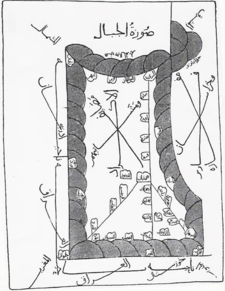

In the tenth and eleventh centuries, several Kurdish principalities emerged in the region: in the north the Shaddadids (951–1174) (in east Transcaucasia between the Kur and Araxes rivers) and the Rawadids (955–1221) (centered on Tabriz and which controlled all of Azerbaijan), in the east the Hasanwayhids (959–1015) (in Zagros between Shahrizor and Khuzistan) and the Annazids (990–1116) (centered in Hulwan) and in the west the Marwanids (990–1096) to the south of Diyarbakır and north of Jazira.[29][30]
Kurdistan in the Middle Ages was a collection of semi-independent and independent states called emirates. It was nominally under indirect political or religious influence of Khalifs or Shahs. A comprehensive history of these states and their relationship with their neighbors is given in the text of Sharafnama, written by Prince Sharaf al-Din Bitlisi in 1597.[31][32] The emirates included Baban, Soran, Badinan and Garmiyan in the south; Bakran, Bohtan (or Botan) and Badlis in the north, and Mukriyan and Ardalan in the east.
The earliest medieval attestation of the toponym Kurdistan is found in a 12th-century Armenian historical text by Matteos Urhayeci. He described a battle near Amid and Siverek in 1062 as to have taken place in Kurdistan.[33][34] The second record occurs in the prayer from the colophon of an Armenian manuscript of the Gospels, written in 1200.[35][36]
A later use of the term Kurdistan is found in Empire of Trebizond documents in 1336[37] and in Nuzhat-al-Qulub, written by Hamdollah Mostowfi in 1340.[38]
Modern history
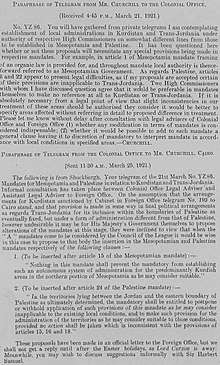
According to Sharafkhan Bitlisi in his Sharafnama, the boundaries of the Kurdish land begin at the Strait of Hormuz in the Persian Gulf and stretch on an even line to the end of Malatya and Marash.[39] Evliya Çelebi, who traveled in Kurdistan between 1640 and 1655, mentioned different districts of Kurdistan including Erzurum, Van, Hakkari, Cizre, Imaddiya, Mosul, Shahrizor, Harir, Ardalan, Baghdad, Derne, Derteng, until Basra.[40]
In the 16th century, after prolonged wars, Kurdish-inhabited areas were split between the Safavid and Ottoman empires. A major division of Kurdistan occurred in the aftermath of the Battle of Chaldiran in 1514, and was formalized in the 1639 Treaty of Zuhab.[41] After the collapse of the Ottoman Empire, the Allies contrived to split Kurdistan (as detailed in the ultimately unratified Treaty of Sèvres) among several countries, including Kurdistan, Armenia and others. However, the reconquest of these areas by the forces of Kemal Atatürk (and other pressing issues) caused the Allies to accept the renegotiated Treaty of Lausanne (1923) and the borders of the modern Republic of Turkey, leaving the Kurds without a self-ruled region.[42] Other Kurdish areas were assigned to the new British and French mandated states of Iraq and Syria.

At the San Francisco Peace Conference of 1945, the Kurdish delegation proposed consideration of territory claimed by the Kurds, which encompassed an area extending from the Mediterranean shores near Adana to the shores of the Persian Gulf near Bushehr, and included the Lur inhabited areas of southern Zagros.[43][44]
At the end of the First Gulf War, the Allies established a safe haven in northern Iraq. Amid the withdrawal of Iraqi forces from three northern provinces, Iraqi Kurdistan emerged in 1992 as an autonomous entity inside Iraq with its own local government and parliament.
A 2010 US report, written before the instability in Syria and Iraq that exists as of 2014, attested that "Kurdistan may exist by 2030".[45] The weakening of the Iraqi state following the 2014 Northern Iraq offensive by the Islamic State of Iraq and the Levant has also presented an opportunity for independence for Iraqi Kurdistan,[46] augmented by Turkey's move towards acceptance of such a state although it opposes moves toward Kurdish autonomy in Turkey and Syria.[47]
Northern Kurdistan
The incorporation into Turkey of the Kurdish-inhabited regions of eastern Anatolia was opposed by many Kurds, and has resulted in a long-running separatist conflict in which thousands of lives have been lost. The region saw several major Kurdish rebellions, including the Koçgiri rebellion of 1920 under the Ottomans, then successive insurrections under the Turkish state, including the 1924 Sheikh Said rebellion, the Republic of Ararat in 1927, and the 1937 Dersim rebellion. All were forcefully put down by the authorities. The region was declared a closed military area from which foreigners were banned between 1925 and 1965.[48][49][50]
In an attempt to deny their existence, the Turkish government categorized Kurds as "Mountain Turks" until 1991;[51][52][53] The words "Kurds", "Kurdistan", or "Kurdish" were officially banned by the Turkish government.[54] Following the military coup of 1980, the Kurdish language was officially prohibited in public and private life.[55] Many people who spoke, published, or sang in Kurdish were arrested and imprisoned.[56] Throughout the 1990s and early 2000s, political parties that represented Kurdish interests were banned.[54]
In 1983, the Kurdish provinces were placed under martial law in response to the activities of the militant separatist organization the Kurdistan Workers' Party (PKK).[57][58] A guerrilla war took place through the 1980s and 1990s in which much of the countryside was evacuated, thousands of Kurdish-populated villages were destroyed by the government, and numerous summary executions were carried out by both sides.[59] Many villages were set on fire.[60][61] Food embargoes were placed on Kurdish villages and towns.[62][63] More than 20,000 Kurds were killed in the violence and hundreds of thousands more were forced to leave their homes.[64]
Turkey has historically feared that a Kurdish state in Northern Iraq would encourage and support Kurdish separatists in the adjacent Turkish provinces, and have therefore historically strongly opposed Kurdish independence in Iraq. However, following the chaos in Iraq after the US invasion, Turkey has increasingly worked with the autonomous Kurdistan Regional Government.[65]
Syrian Civil War
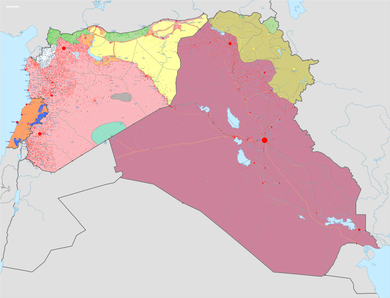
The successful 2014 Northern Iraq offensive by the Islamic State of Iraq and the Levant, with the resultant weakening of the ability of the Iraqi state to project power, also presented a "golden opportunity" for the Kurds to increase their independence and possibly declare an independent Kurdish state.[46] The Islamic State in Iraq and the Levant, who took more than 80 Turkish persons captive in Mosul during their offensive, is an enemy of Turkey, making Kurdistan useful for Turkey as a buffer state. On 28 June 2014 Hüseyin Çelik, a spokesman for the ruling AK party, made comments to the Financial Times indicating Turkey's readiness to accept an independent Kurdistan in northern Iraq.[47] Various sources have reported that Al-Nusra has issued a fatwā calling for Kurdish women and children in Syria to be killed,[66] and the fighting in Syria has led tens of thousands of refugees to flee to Iraq's Kurdistan region.[67][68][69] As of 2015, Turkey is actively supporting the Al-Nusra,[70] but as of January 2017, Turkey's foreign ministry has said that Al-Nusra is a terrorist group and has acted accordingly.[71]
People
The Kurds are a people of Indo-European origin. They speak an Iranian language known as Kurdish, and comprise the majority of the population of the region – however, included therein are Arab, Armenian, Assyrian,[72] Azerbaijani, Jewish, Ossetian, Persian, and Turkish communities. Most inhabitants are Muslim, but adherents to other religions are present as well – including Yarsanism, Yazidis, Alevis, Christians,[73] and in the past, Jews, most of whom emigrated to Israel.[74]
Geography
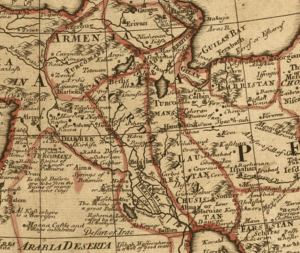
According to the Encyclopædia Britannica, Kurdistan covers about 190,000 km² (or 73,000 square miles), and its chief towns are Diyarbakır (Amed), Bitlis (Bedlîs) and Van (Wan) in Turkey, Erbil (Hewlêr) and Slemani in Iraq, and Kermanshah (Kirmanşan), Sanandaj (Sine), Ilam and Mahabad (Mehabad) in Iran.[75] According to the Encyclopaedia of Islam, Kurdistan covers around 190,000 km² (73,000 sq. mi.) in Turkey, 125,000 km² (48,000 sq. mi.) in Iran, 65,000 km² (25,000 sq. mi.) in Iraq, and 12,000 km² (5,000 sq. mi.) in Syria, with a total area of approximately 392,000 km² (151,000 sq. mi.).[76]
Iraqi Kurdistan is divided into six governorates, three of which (and parts of others) are under the control of the Kurdistan Regional Government. Iranian Kurdistan encompasses Kurdistan Province and the greater parts of West Azerbaijan, Kermanshah, and Īlām provinces. Syrian Kurdistan (Kurdish: Rojavayê Kurdistanê) is located primarily in northern Syria, and covers the province of Al Hasakah and northern Raqqa Governorate, northern Aleppo Governorate and also Jabal al-Akrad (Mountain of the Kurds) region. The major cities in this region are Qamishli (Kurdish: Qamişlo) and Al Hasakah (Kurdish: Hasakah).
Turkish Kurdistan encompasses a large area of Eastern Anatolia Region and southeastern Anatolia of Turkey and it is home to an estimated 6 to 8 million Kurds.[77] There are another 9 to 12 million Turkish citizens of Kurdish descent in predominantly Turkish regions of Turkey as the majority of Turkish Kurds no longer live in Southeastern Anatolia.
Subdivisions (Upper and Lower Kurdistan)
In A Dictionary of Scripture Geography (published 1846), John Miles describes Upper and Lower Kurdistan as following:

Modern Curdistan is of much greater extent than the ancient Assyria, and is composed of two parts the Upper and Lower. In the former is the province of Ardelan, the ancient Arropachatis, now nominally a part of Irak Ajami, and belonging to the north west division called Al Jobal. It contains five others namely, Betlis, the ancient Carduchia, lying to the south and south west of the lake Van. East and south east of Betlis is the principality of Julamerick, south west of it is the principality of Amadia. the fourth is Jeezera ul Omar, a city on an island in the Tigris, and corresponding to the ancient Bezabde. the fifth and largest is Kara Djiolan, with a capital of the same name. The pashalics of Kirkook and Solimania also comprise part of Upper Curdistan. Lower Curdistan comprises all the level tract to the east of the Tigris, and the minor ranges immediately bounding the plains and reaching thence to the foot of the great range, which may justly be denominated the Alps of western Asia.[78]
The northern, northwestern and northeastern parts of Kurdistan are referred to as upper Kurdistan, and includes the areas from west of Amed to Lake Urmia.
The lowlands of southern Kurdistan are called lower Kurdistan. The main cities in this area are Kirkuk and Arbil.
Climate
Much of the region is typified by a continental climate – hot in the summer, cold in the winter. Despite this, much of the region is fertile and has historically exported grain and livestock. Precipitation varies between 200 and 400 mm a year in the plains, and between 700 and 3,000 mm a year on the high plateau between mountain chains.[76] The mountainous zone along the borders with Iran and Turkey experiences dry summers, rainy and sometimes snowy winters, and damp springs, while to the south the climate progressively transitions toward semi-arid and desert zones.
Flora and fauna
Kurdistan is one of the most mountainous regions in the world with a cold climate receiving annual precipitation adequate to sustain temperate forests and shrubs. Mountain chains harbor pastures and forested valleys, totaling approximately 16 million hectares (160,000 km²), including firs and countryside is mostly oaks, conifers, platanus, willow, poplar and, to the west of Kurdistan, olive trees.[76]
The region north of the mountainous region on the border with Iran and Turkey features meadow grasses and such wild trees as, Abies cilicica, Fagus sylvatica, Quercus calliprinos, Quercus brantii, Quercus infectoria, Quercus ithaburensis, Quercus macranthera, Cupressus sempervirens, Platanus orientalis, Pinus brutia, Juniperus foetidissima, Juniperus excelsa, Juniperus oxycedrus, Prunus cerasus, Salix alba, Fraxinus excelsior, Paliurus spina-christi, Olea europaea, Ficus carica, Populus euphratica, Populus nigra, Crataegus monogyna, Crataegus azarolus, cherry plum, rose hips, Cercis siliquastrum, pistachio trees, pear and Sorbus graeca. The desert in the south is mostly steppe and would feature xeric plants such as palm trees, tamarix, date palm, fraxinus, poa, white wormwood and chenopodiaceae.[79][78] The steppe and desert in the south, by contrast, have such species as palm trees and date palm.
Animals found in the region include the Syrian brown bear, wild boar, gray wolf, the golden jackal, Indian crested porcupine, the red fox, goitered gazelle, Eurasian otter, striped hyena, Persian fallow deer, long-eared hedgehog, onager, mangar and the Euphrates softshell turtle.[80] Birds include, the hooded crow, common starling, Eurasian magpie, European robin, water pipit, spotted flycatcher, namaqua dove, saker falcon, griffon vulture, little crake and collared pratincole, among others.[81]
Mountains
Mountains are important geographical and symbolic features of Kurdish life, as evidenced by the saying "Kurds have no friends but the mountains."[82] Mountains are regarded as sacred by the Kurds.[83] Included in the region are Mount Judi and Ararat (both prominent in Kurdish folklore), Zagros, Qandil, Shingal, Mount Abdulaziz, Kurd Mountains, Jabal al-Akrad, Shaho, Gabar, Hamrin, and Nisir.
Water resources
Kurdistan is a region relatively rich in water, especially for countries in the Middle East region. Large part of water to the neighbor countries come from it. It means that political stability and peace in the region are important to the water supply of the region and preventing wars.[84][85] Many think that for conserving the water "returning to traditional water-conserving cultivation techniques" will be needed, as well as "communal economy"[86]
Rivers
The plateaus and mountains of Kurdistan, which are characterized by heavy rain and snow fall, act as a water reservoir for the Near and Middle East, forming the source of the Tigris and Euphrates rivers, as well as other numerous smaller rivers, such as the Little Khabur, Khabur, Tharthar, Ceyhan, Araxes, Kura, Sefidrud, Karkha, and Hezil. Among rivers of historical importance to Kurds are the Murat (Arasān) and Buhtān rivers in Turkey; the Peshkhābur, the Little Zab, the Great Zab, and the Diyala in Iraq; and the Jaghatu (Zarrinarud), the Tātā'u (Siminarud), the Zohāb (Zahāb), and the Gāmāsiyāb in Iran.
These rivers, which flow from heights of three to four thousand meters above sea level, are significant both as water sources and for the production of energy. Iraq and Syria dammed many of these rivers and their tributaries, and Turkey has an extensive dam system under construction as part of the GAP (Southeast Anatolia Project); though incomplete, the GAP already supplies a significant proportion of Turkey's electrical energy needs. Due to the extraordinary archaeological richness of the region, almost any dam impacts historic sites.[87]
Lakes
Kurdistan extends to Lake Urmia in Iran on the east. The region includes Lake Van, the largest body of water in Turkey; the only lake in the Middle East with a larger surface is Lake Urmia – though not nearly as deep as Lake Van, which has a much larger volume. Urmia, Van, as well as Zarivar Lake west of Marivan, and Lake Dukan near the city of Sulaymaniyah, are frequented by tourists.[87]
Petroleum and mineral resources
KRG-controlled parts of Iraqi Kurdistan are estimated to contain around 45 billion barrels (7.2×109 m3) of oil, making it the sixth largest reserve in the world. Extraction of these reserves began in 2007.
Al-Hasakah province, also known as Jazira region, has geopolitical importance of oil and is suitable for agricultural lands.
In November 2011, Exxon challenged the Iraqi central government's authority with the signing of oil and gas contracts for exploration rights to six parcels of land in Kurdistan, including one contract in the disputed territories, just east of the Kirkuk mega-field.[88] This act caused Baghdad to threaten to revoke Exxon's contract in its southern fields, most notably the West-Qurna Phase 1 project.[89] Exxon responded by announcing its intention to leave the West-Qurna project.[90]
As of July 2007, the Kurdish government solicited foreign companies to invest in 40 new oil sites, with the hope of increasing regional oil production over the following five years by a factor of five, to about 1 million barrels per day (160,000 m3/d).[91] Gas and associated gas reserves are in excess of 2,800 km3 (100×1012 cu ft). Notable companies active in Kurdistan include ExxonMobil, Total, Chevron, Talisman Energy, Genel Energy, Hunt Oil, Gulf Keystone Petroleum, and Marathon Oil.[92]
Other mineral resources that exist in significant quantities in the region include coal, copper, gold, iron, limestone (which is used to produce cement), marble, and zinc. The world's largest deposit of rock sulfur is located just southwest of Erbil (Hewlêr).[93]
In July 2012, Turkey and the Kurdistan Regional Government signed an agreement by which Turkey will supply the KRG with refined petroleum products in exchange for crude oil. Crude deliveries are expected to occur on a regular basis.[94]
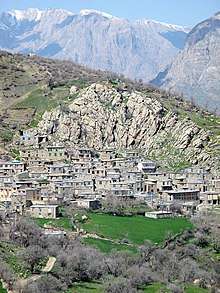 A typical Kurdish village in Hawraman, Kurdistan
A typical Kurdish village in Hawraman, Kurdistan Canyon in Rawanduz in northern Iraqi Kurdistan
Canyon in Rawanduz in northern Iraqi Kurdistan.jpg) The city of Batman, eastern Turkey
The city of Batman, eastern Turkey Countryside in Sulaymaniyah
Countryside in Sulaymaniyah
See also
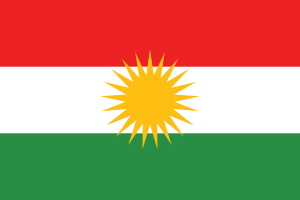

.svg.png)
References
- "Kurdish lands". Retrieved 6 November 2019.
- "The Kurdish lands". Library of Congress, Washington, D.C. 20540 USA. Retrieved 6 November 2019.
- Hakan Özoğlu (2004). Kurdish Notables and the Ottoman State: Evolving Identities, Competing Loyalties, and Shifting Boundaries. p. 121.
- Historical Dictionary of the Kurds. Michael M. Gunter. 310.
- "Kurdistan". Encyclopædia Britannica Online. Retrieved 29 July 2010.
- Zaken, Mordechai (2007). Jewish Subjects and Their Tribal Chieftains in Kurdistan: A Study in Survival. Leiden, The Netherlands: BRILL. pp. 1–2. ISBN 9789004161900.
Kurdistan was never a sovereign state, though the area with an ethnic and linguistic majority of Kurdish population is defined as Kurdistan.
- M. T. O'Shea, Trapped between the map and reality: geography and perceptions of Kurdistan, 258 pp., Routledge, 2004. (see p. 77)
- Kurdistan, Britannica Concise.
- Mitchell 2010.
- Kurdish Awakening: Nation Building in a Fragmented Homeland, (2014), by Ofra Bengio, University of Texas Press
- "The Columbia Encyclopedia, Sixth Edition, 2005". bartleby.com.
- Hamit Bozarslan “The Kurdish Question: Can it be solved within Europe?”, page 84 “The years of silence and of renewal” in Olivier Roy, ed. Turkey Today: A European Country?.
- Iraqi Constitution, Article 113.
- "Kurds seek autonomy in democratic Syria". BBC. 16 August 2012.
- The Edinburgh encyclopaedia, conducted by D. Brewster—Page 511, Original from Oxford University—published 1830
- An Account of the State of Roman-Catholick Religion, Sir Richard Steele, Published 1715
- N. Maxoudian, "Early Armenia as an Empire: The Career of Tigranes III, 95–55 BC", Journal of the Royal Central Asian Society, Vol. 39, Issue 2, April 1952, pp. 156–63.
- A.D. Lee, The Role of Hostages in Roman Diplomacy with Sasanian Persia, Historia: Zeitschrift für Alte Geschichte, Vol. 40, No. 3 (1991), pp. 366–74 (see p. 371)
- Archived 1 May 2008 at the Wayback Machine
- "Mahabad". Britannica Online Encyclopedia. Retrieved 13 May 2011.
- Rawlinson, George, The Seven Great Monarchies of the Ancient Eastern World, Vol. 7, 1871. (copy at Project Gutenberg)
- Revue des études arméniennes, vol. 21, 1988–1989, p. 281, by Société des études armeniennes, Fundação Calouste Gulbenkian, Published by Imprimerie nationale, P. Geuthner, 1989.
- T. A. Sinclair, "Eastern Turkey, an Architectural and Archaeological Survey", 1989, volume 3, page 360.
- Kurds, The Columbia Encyclopedia, Sixth Edition, 2001.
- J. Bell, A System of Geography. Popular and Scientific (A Physical, Political, and Statistical Account of the World and Its Various Divisions), pp. 133–4, Vol. IV, Fullarton & Co., Glasgow, 1832.
- J. T. Walker, The Legend of Mar Qardagh: Narrative and Christian Heroism in Late Antique Iraq (368 pages), University of California Press, ISBN 0-520-24578-4, 2006, pp. 26, 52, 108.
- T. A. Sinclair, "Eastern Turkey, an Architectural and Archaeological Survey", Vol. 3, Pindar Press, ISBN 978-1-904597-76-6, 1989, page 337.
- Mouawad, R. J. (1992). "The Kurds and Their Christian Neighbors: The Case of Orthodox Syriacs". Parole de l'Orient. XVII: 127–141.
- Maria T. O'Shea, Trapped between the map and reality: geography and perceptions of Kurdistan , 258 pp., Routledge, 2004. (see p. 68)
- I. Gershevitch, The Cambridge history of Iran: The Saljuq and Mongol periods, Vol. 5, 762 pp., Cambridge University Press, 1968. (see p. 237 for "Rawwadids")
- "Sharafnama: History of the Kurdish Nation". Mazdapublishers.com. Retrieved 10 December 2017.
- For a list of these entities see Kurdistan and its native Provincial subdivisions Archived 18 November 2005 at the Wayback Machine
- Matt'eos Urhayec'i, (in Armenian) Ժամանակագրություն (Chronicle), ed. by M. Melik-Adamyan et al., Erevan, 1991. (p. 156)
- G. Asatrian, Prolegomena to the Study of the Kurds, Iran and the Caucasus, Vol. 13, pp. 1–58, 2009. (see p. 19)
- A.S. Mat'evosyan, Colophons of the Armenian Manuscripts, Erevan, 1988. (p. 307)
- G. Asatrian, Prolegomena to the Study of the Kurds, Iran and the Caucasus, Vol. 13, pp. 1–58, 2009. (p. 20)
- Zehiroglu, Ahmet M. ; "Trabzon Imparatorlugu" 2016 (ISBN 978-605-4567-52-2); p. 169
- G. Asatrian, Prolegomena to the Study of the Kurds, Iran and the Caucasus, Vol. 13, pp. 1–58, 2009. (see p. 20)
- Özoğlu, Hakan (2004). Kurdish Notables and the Ottoman State. State University of New York Press. pp. 27–28. ISBN 978-0-7914-5993-5.
- Özoğlu, Hakan (2004). Kurdish Notables and the Ottoman State. State University of New York Press. p. 34. ISBN 978-0-7914-5993-5.
- C. Dahlman, "The Political Geography of Kurdistan", Eurasian Geography and Economics, Vol.43, No.4, pp.271–299, 2002.
- Sardar Aziz (2013). "Re-conceptualizing Kurdistan as a Battlefield." "Un mondo senza stati è un mondo senza guerre". Politisch motivierte Gewalt im regionalen Kontext, ed. by Georg Grote, Hannes Obermair and Günther Rautz (EURAC book 60), Bozen–Bolzano, ISBN 978-88-88906-82-9, pp. 45–61.
- C. Dahlman, The Political Geography of Kurdistan, Eurasian Geography and Economics, Vol.43, No.4, p. 274.
- "The map presented by the Kurdish League Delegation, March 1945". Akakurdistan.com. Retrieved 13 May 2011.
- "Turkey may be divided, a Kurdish state could become a reality by 2030: U.S. Intelligence report". ekurd.net.
- "The Rise of ISIS, a Golden Opportunity for Iraq's Kurds". aucegypt.edu. 27 June 2014.
- "Turkey Ready To Accept Kurdish State in Northern Iraq". International Business Times UK. 28 June 2014.
- M.M. Gunter, The Kurds and the future of Turkey, 184 pp., Palgrave Macmillan, 1997. (see p. 6)
- G. Chaliand, A people without a country: the Kurds and Kurdistan, 259 pp., Interlink Books, 1993. (see p. 250)
- Joost Jongerden, The settlement issue in Turkey and the Kurds: an analysis of spatial policies, modernity and war, 354 pp., BRILL Publishers, 2007. (see p. 37)
- "Turkey – Linguistic and Ethnic Groups".
- Bartkus, Viva Ona, The Dynamic of Secession, (Cambridge University Press, 1999), pp. 90–1.
- Çelik, Yasemin (1999). Contemporary Turkish foreign policy (1. publ. ed.). Westport, Conn.: Praeger. p. 3. ISBN 978-0-275-96590-7.
- Baser, Bahar (2015). Diasporas and Homeland Conflicts: A Comparative Perspective. Ashgate Publishing. p. 63. ISBN 978-1-4724-2562-1.
- Toumani, Meline. Minority Rules, New York Times, 17 February 2008
- Aslan, Senem (2014). Nation Building in Turkey and Morocco. Cambridge University Press. p. 134. ISBN 978-1-107-05460-8.
- Kurd, The Hutchinson Unabridged Encyclopedia including Atlas, 2005
- ", NY Times, 28 September 2007
- Martin van Bruinessen, "Kurdistan." The Oxford Companion to the Politics of the World, 2nd edition. Joel Krieger, ed. Oxford University Press, 2001.
- Ibrahim, Ferhad (2000). The Kurdisch conflict in Turkey : obstacles and chances for peace and democracy. Münster : New York, N.Y.: Lit ; St. Martin's press. p. 182. ISBN 978-3-8258-4744-9.
- Gunes, Cengiz (2013). The Kurdish National Movement in Turkey: From Protest to Resistance. Routledge. p. 130. ISBN 978-1-136-58798-6.
- Olson, Robert (1996). The Kurdish nationalist movement in the 1990s: its impact on Turkey and the Middle East. Lexington, Ky.: University Press of Kentucky. p. 16. ISBN 978-0-8131-0896-4.
- Shaker, Nadeen. "After Being Banned for Almost a Century, Turkey's Kurds Are Clamoring to Learn Their Own Language". Muftah.
- "Kurdish rebels kill Turkey troops", BBC News, 8 May 2007
- "Bloomberg Business". Bloomberg.com.
- See * David Phillips (World Post column) "President Masoud Barzani of Iraqi Kurdistan has pledged protection for Syrian Kurds from al-Nusra, a terrorist organization, which issued a fatwa calling for the killing of Kurdish women and children"
- David Phillips (World Post column) "Al-Nusra Front, Syria's Al-Qaeda affiliate, issued a fatwa condoning the killing of Kurdish women and children"
- ITNsource.com "A fatwa (edict) has been issued permitting the shedding of the blood of the Kurds and they called from the mosque loudspeakers that the shedding of the Kurdish blood is halal"
- "Some 30,000 Syrians flee to Iraq's Kurdistan region, more expected". UNHCR. 20 August 2013.
- Martin Chulov (19 August 2013). "Syrian Kurds continue to flee to Iraq in their thousands". The Guardian.
- "Syrian Kurds Flee To Iraq by the Thousands". Radio Free Europe/Radio Liberty. 20 August 2013.
- Kim Sengupta (12 May 2015). "Turkey and Saudi Arabia alarm the West by backing Islamist extremists the Americans had bombed in Syria". The Independent.
- Reuters Staff (26 January 2017). "Turkey sees Nusra Front as terrorist group, acts accordingly: source". Reuters. Retrieved 26 September 2017.
- "Basic Information". Czech-Kurdish Chamber of Commerce. Retrieved 14 December 2017.
- Mehrdad R. Izady, The Kurds: A Concise Handbook, 1992, Taylor & Francis, Washington, D.C., "Archived copy". Archived from the original on 13 July 2011. Retrieved 14 April 2010.CS1 maint: archived copy as title (link)
- "Photos of Kurdish Jews in Israel". Saradistribution.com. Retrieved 13 May 2011.
- Kurdistan, Encyclopædia Britannica
- Encyclopaedia of Islam
- Myrie, Clive (26 October 2007). "Middle East | Kurds show coded support for PKK". BBC News. Retrieved 13 May 2011.
- A Dictionary of Scripture Geography, p 57, by John Miles, 486 pages, Published 1846, Original from Harvard University
- Village on the Euphrates: From Foraging to Farming at Abu Hureyra, by A.M.T Moore, G.C. Hillman and A.J Legge, Published 2000, Oxford University Press
- Al-Sheikhly, O.F.; and Nader, I.A. (2013). The Status of the Iraq Smooth-coated Otter Lutrogale perspicillata maxwelli Hayman 1956 and Eurasian Otter Lutra lutra Linnaeus 1758 in Iraq. IUCN Otter Spec. Group Bull. 30(1).
- "Iraq's Marshes Show Progress toward Recovery". Wildlife Extra. Archived from the original on 9 May 2010. Retrieved 7 August 2010.
- John Bulloch and Harvey Morris, No Friends but the Mountains: The Tragic History of the Kurds, ISBN 0-19-508075-0
- "Iraqi Kurds: "No Friend but the Mountains"". The Huffington Post. 7 October 2013.
- King, Marcus. "A Watershed Moment for Iraqi Kurdistan: Subnational Hydropolitics and Regional Stability". Environmental Change and Security Program Woodrow Wilson International Center for Scholars. Retrieved 24 May 2019.
- Whitcomb, Alexander; Aziz, Rekar (17 May 2014). "Despite Abundant Water, Kurdistan Prone to Future Shortages". Rudaw. Retrieved 24 May 2019.
- Keller, Sean (6 February 2018). "Agriculture and Autonomy in the Middle East". Local Futures – Economics of Happiness. International Society for Ecology and Culture. Retrieved 24 May 2019.
- "Economy: Water". The Encyclopædia of Kurdistan. Retrieved 14 December 2017.
- "westernzagros.com" (PDF). Archived from the original (PDF) on 9 November 2013.
- "Exxon's Kurdistan". Zawya. 4 March 2012. Archived from the original on 17 April 2012. Retrieved 31 December 2012.
- "Iraq says expects Exxon to finish West Qurna Sale by December". Reuters. Retrieved 31 December 2012.
- "Iraqi Kurds open 40 new oil sites to foreign investors". Iraq Updates. 9 July 2007. Retrieved 13 May 2011.
- "Kurdistan Oil and Gas Activity Map" (PDF). Western Zagros. Archived from the original (PDF) on 9 November 2013. Retrieved 31 December 2012.
- Official statements on the oil and gas sector in the Kurdistan region Archived 12 October 2007 at the Wayback Machine, Kurdistan Development Corporation.
- "First Shipment of Kurdistan Crude Arrives in Turkey". BrightWire. Archived from the original on 18 January 2013.
Sources
- Mitchell, Colin Paul (2010). "Kurdistan". In Bjork, Robert E. (ed.). The Oxford Dictionary of the Middle Ages. Oxford University Press. ISBN 978- 0199574834.CS1 maint: ref=harv (link)
Further reading
- Besikci, Ismail. Selected Writings [about] Kurdistan and Turkish Colonialism. London: Published jointly by Kurdistan Solidarity Committee and Kurdistan Information Centre, 1991. 44 p. Without ISBN
- King, Diane E. Kurdistan on the Global Stage: Kinship, Land, and Community in Iraq (Rutgers University Press; 2014) 267 pages; Scholarly study of traditional social networks, such as patron-client relations, as well as technologically mediated communication, in a study of gender, kinship, and social life in Iraqi Kurdistan.
- Öcalan, Abdullah, Interviews and Speeches [about the Kurdish cause]. London: Published jointly by Kurdistan Solidarity Committee and Kurdistan Information Centre, 1991. 46 p. Without ISBN
- Reed, Fred A. Anatolia Junction: a Journey into Hidden Turkey. Burnaby, B.C.: Talonbooks [sic], 1999. 320 p., ill. with b&w photos. N.B.: Includes a significant coverage of the Turkish sector of historic Kurdistan, the Kurds, and their resistance movement. ISBN 0-88922-426-9
External links
| Wikisource has the text of the 1911 Encyclopædia Britannica article Kūrdistān. |


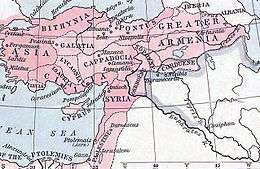
_1803.jpg)
